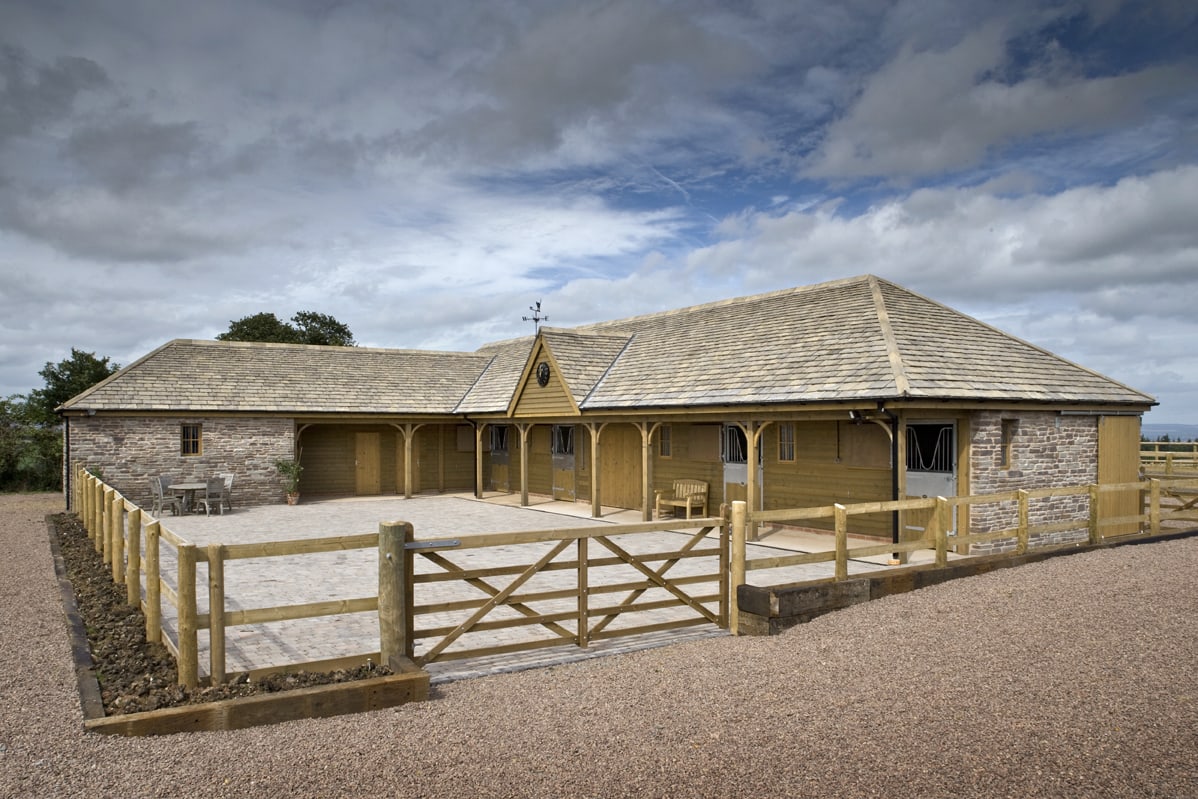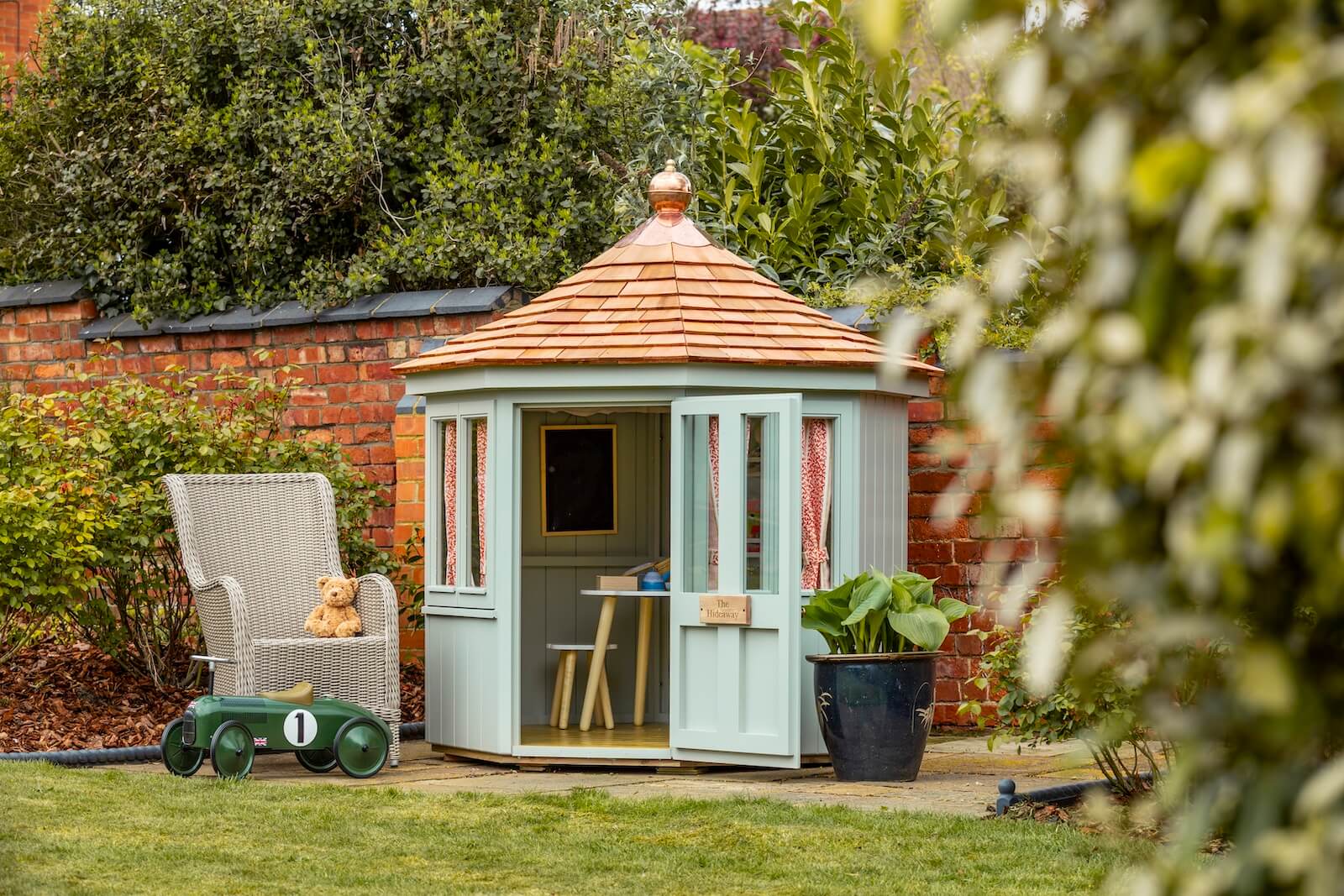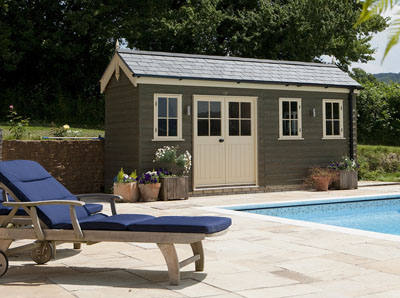We’re finding that our clients are using their summer houses and garden buildings all year round because they are so well-designed and perfectly crafted and offer a genuinely useful extension to their homes. With a premium, high-quality space in your garden, you will be keen to ensure that it is comfortable at all times whatever the outdoor temperature. In our blog, we explore options for heating your summer house and pass on our top tips.
At the Met Office weather station closest to Scotts’ HQ in Northamptonshire, the average temperature is 14.1 degrees centigrade and we can expect to accommodate lows below freezing. If you plan to spend any time in the garden outside the summer months, we recommend the addition of heating to your summer house whether you plan to use it as a home office, a cosy retreat, or an entertaining space.
Heating your summer house in Winter
Before you set to go shopping for the perfect heating solution it’s worth considering the following at the very start of your summer house project:
Minimise heat loss: a premium summer house supplier will offer you the option to include double glazing and insulation within the roof and walls that will serve to reduce heat loss. Without insulation, whatever heating you choose will become less effective and potentially more costly to run. Talk to Scotts at the outset as insulation is challenging to retrofit.
Type of heating system: make sure you choose the right size and capacity of heating system for the space it is required serve. A system that is too small may struggle to heat the space adequately but, at the same time, you need to avoid wasting energy on an over-engineered solution.
Energy efficiency: consider not only the cost of the type of heating you install but also the running costs. This may influence your decision on the type of heating to choose depending on how often you use your summer house and whether it will represent value for money. Again, you can save on costs by getting the garden building properly insulated from the start. Premium summer houses like those in Scotts’ range are built with precision and their perfectly fitting doors and windows prevent heat loss from draughts.
Ventilation: adequate air circulation is essential to prevent the build-up of moisture which could lead to mould or other issues. It is important to maintain good air quality in your summer house or garden building especially if you intend to use it every day for work.
Installation challenges: think about the amount of space you have and the constraints within your summer house or garden room that could lead to challenges with the installation of certain types of heating system. Check that there is sufficient space for the heaters you have chosen. Octagonal summer houses, for example, are eight-sided so ask Scotts for the specifications to get the measurements right.
Electric power: many types of heaters rely on electric power, and it may be easier to commission a professional to install mains electricity during your summer house build process. Access to power is useful for other resources too including Wi-Fi, powering your PC or laptop, watching TV, or playing video games.
Safety: if you’re using any device that generates heat, always ensure that they it is installed safely to minimise the risk of fire and keep flammable materials away from heating elements.
Usage patterns: if you’re not using the garden building all the time consider heating options that can warm up the space instantly as soon as you need it. Storage heaters, for example, require a longer start-up time than fan or convection heaters from which you can benefit immediately.
Aesthetic considerations: your beautifully crafted summer house will have been carefully designed and curated according to your taste and preferences. It is worth carrying out some research to ensure that the heaters you install do not compromise the aesthetics of your space. Choose stylish items like this contemporary, remote-control heater that complement the overall design of your garden building.
Costs: factor in the cost of purchasing and installing the heating system within your budget and compare different options to find one that fits your needs. Remember to weigh up operational as well as installation costs.
Take advice: Depending on the scope of your project it may be worth consulting a heating professional or contractor who can assess the specific requirements of the space and recommend the most suitable solution.
Summer House Heaters
Heaters you can use inside your garden building are available in all shapes and sizes and it is worth considering all the options before you make a choice.
Electric heaters: whether you choose a fan, infrared or convection heater, you will need a power source. This type of heater can be wall mounted or freestanding to suit a range of structures whether you’re planning a small octagonal summer house or a larger bespoke garden room. Electricity is not necessarily the cheapest fuel, but it is clean and convenient especially if you extend your mains electricity from your house to your garden room.
 Wood burning stove: increasingly popular in houses across the land, wood burning stoves can create the perfect rustic and cosy atmosphere where you can relax. They don’t rely on electric power and are highly decorative and appealing. However, installation can be more complex, and these stoves require proper ventilation so do seek expert help. Scotts’ summer houses can be adapted to accommodate the installation of wood burning stoves as part of our bespoke service.
Wood burning stove: increasingly popular in houses across the land, wood burning stoves can create the perfect rustic and cosy atmosphere where you can relax. They don’t rely on electric power and are highly decorative and appealing. However, installation can be more complex, and these stoves require proper ventilation so do seek expert help. Scotts’ summer houses can be adapted to accommodate the installation of wood burning stoves as part of our bespoke service.
Gas heaters: although you are unlikely to connect your summer house to the mains gas supply, this type of heater can be run on bottled gas. Available in various models, it is possible to choose from vented and vent-free options. Be aware that vent-free heaters release water vapour and other pollutants so your summer house would need to be properly ventilated for safety reasons.
Underfloor heating: for a touch of luxury, underfloor heating provides an even distribution of heat and eliminates the need for visible heaters either on the wall or taking up floor space. This is a very comfortable and energy efficient option, but underfloor heating controls are not the most responsive so make sure you install a timer to give it a boost before you need it. The installation of underfloor heating is complex and may warrant professional assistance. Any maintenance you need to carry out would require taking up the floor so ensure that this is accounted for at the installation stage.
Solar-powered heating: a fantastic source of renewable energy that reduces your electricity consumption, solar powered heaters are environmentally friendly and cost effective in the long term. Obviously, its effectiveness depends on the availability of sunlight and so heating may need to be augmented at night or on cloudy days. Think about the location and appearance of solar panels and the impact they might make on your home and garden.
Our top picks to keep you warm and cosy
In addition to your summer house heating solutions, you can also keep warm in winter with useful accessories and gadgets.
- Keep a luxury faux fur rug inside your lidded seating and cuddle up on cooler days.
- Add seated heat pads to Scotts’ upholstered cushions.
- Set up a sheepskin-lined electric footwarmer under your home office desk.
- Relax at your laptop with a mini ceramic portable fan heater.
- Choose warm lighting options
- Choose a cosy hot water bottle with a cover to match your summer house décor.
- An insulated vacuum flask will keep your hot chocolate warm as you walk down the garden.
Getting warmer
Selecting the right heating solution for your summer house or garden building depends on your specific needs and budget. Whether you opt for the simplicity or electric heaters, the ambience of a wood burning stove, or the luxury of underfloor heating, a careful decision will ensure that your outdoor space remains a comfortable haven throughout the seasons.
Our summer house team will talk you through the options for double-glazed and insulated summer houses so whatever heating you choose, it won’t be wasted energy.
Contact us via our web form or call us to discuss getting a warm and cozy summer house that you can use any time of the year.











